Remove concerns when deploying collaborative robot arms into manufacturing automation
Automation has long been a goal that many businesses want to pursue due to the benefits in terms of cost, productivity and quality that they bring. With outstanding advantages such as flexibility, safety or reasonable cost - collaborative robot arms were born and became a powerful assistant to help businesses solve the automation problem.
Although the effectiveness of using collaborative robots in production has been proven through many practical applications in thousands of businesses around the world. But before making any decision, managers still have to consider and research carefully. Understanding that, this series of articles will help answer the questions that managers often ask before starting to apply collaborative robot arms in automated production such as: Is the installation complicated or is the operation and maintenance expensive?
ARE YOU READY TO AUTOMATE WITH COLLABORATIVE ROBOT ARMS?
The first issue that needs to be determined before starting to apply collaborative robots is to recognize the needs of the business. Below are some questions that can help businesses determine whether applying collaborative robotic arms to automate is necessary or not and what tasks really need to be automated.
When should I deploy collaborative robotic arms?
Before deciding to invest in a new technology in the production line, it is necessary to evaluate the current production status of the business. If your business is currently experiencing the following situations, using collaborative robots in production is an optimal option that you should consider:
- The production environment is dangerous, toxic or the work is too heavy to affect human health.
- Businesses are too dependent on manual labor.
- Labor shortage and labor costs are too high.
- Productivity and product quality are not guaranteed
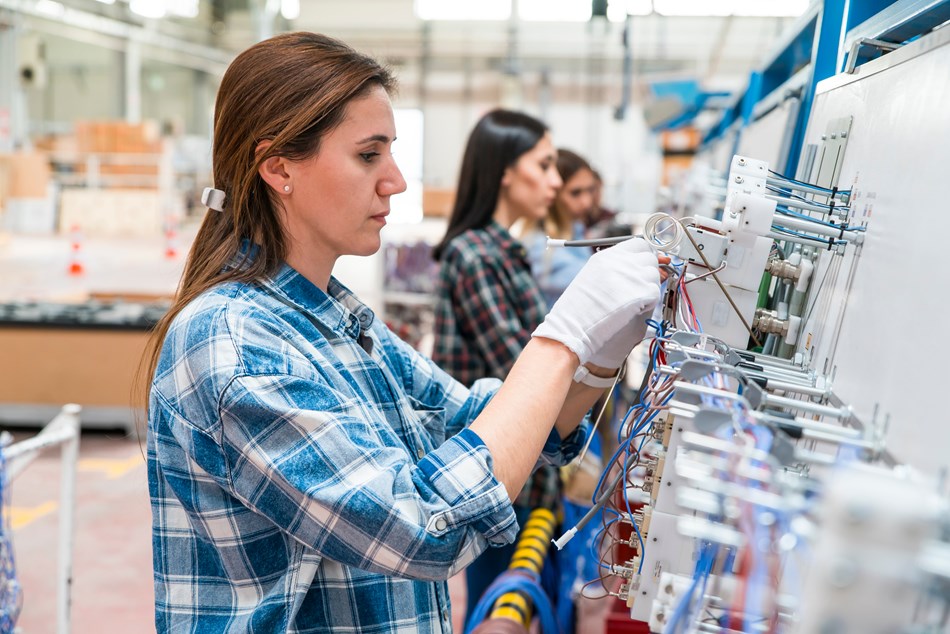
Deploying automation with collaborative robots is the optimal choice when labor costs are too high
Which tasks should be automated?
There are many ways to determine which tasks are best suited to collaborative robots, depending on the production situation of each business. Here are some suggestions for you to refer to:
- Observe your employees: What tasks make your employees feel unhappy or absent the most?
- Which tasks are currently too simple or too dangerous? Simple tasks such as screwing and screwing, moving objects from one location to another, welding, and palletizing can be handled well by collaborative robots without wasting human labor.
- Which tasks are bottlenecks or idle workers? Bottlenecks can originate from inefficient workers or inconsistent worker productivity, which increases production time and costs. Collaborative robots can take over tasks where congestion occurs, helping to ensure productivity and smooth production speeds.
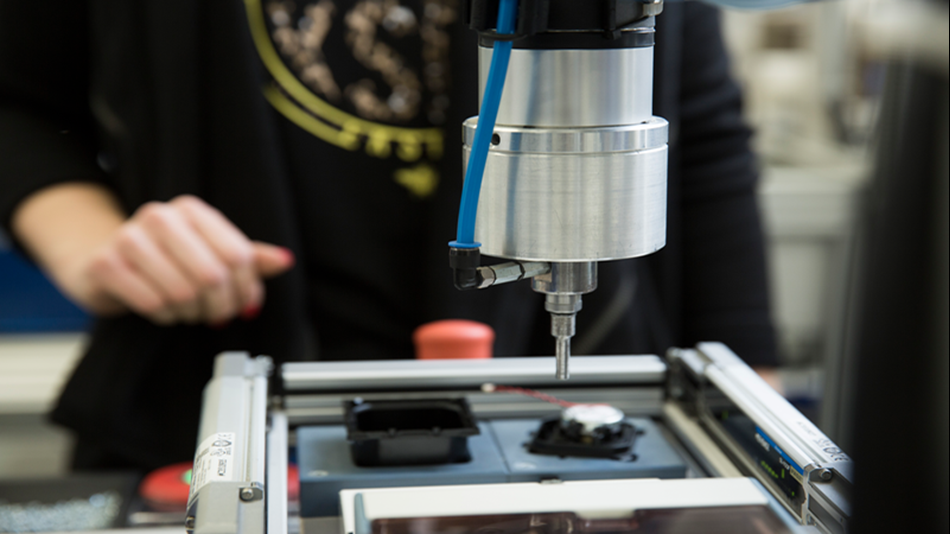
Collaborative robot arms take on pick and place and product assembly tasks
Which robot arm is right for me?
There are many types of collaborative robots available today to help handle different tasks in the automation process. To be able to choose and use a collaborative robot that is suitable for your business's production status, you can refer to the following criteria:
- Cobot load capacity.
- Collaborative robot's operating area or range.
- Cobot deployment cost.
IS ASSEMBLY AND DEPLOYMENT OF COLLABORATIVE ROBOT ARM COMPLEX?
Compared to traditional industrial robots that are often heavy, complex, time-consuming and require the help of knowledgeable and skilled experts, collaborative robots are very compact and therefore have many advantages in installation and deployment. Some strengths in the installation and deployment of collaborative robots can be mentioned as:
- Does not affect the existing production layout.
- Extremely fast installation and deployment even for inexperienced people, helping businesses quickly respond to fluctuations in production.
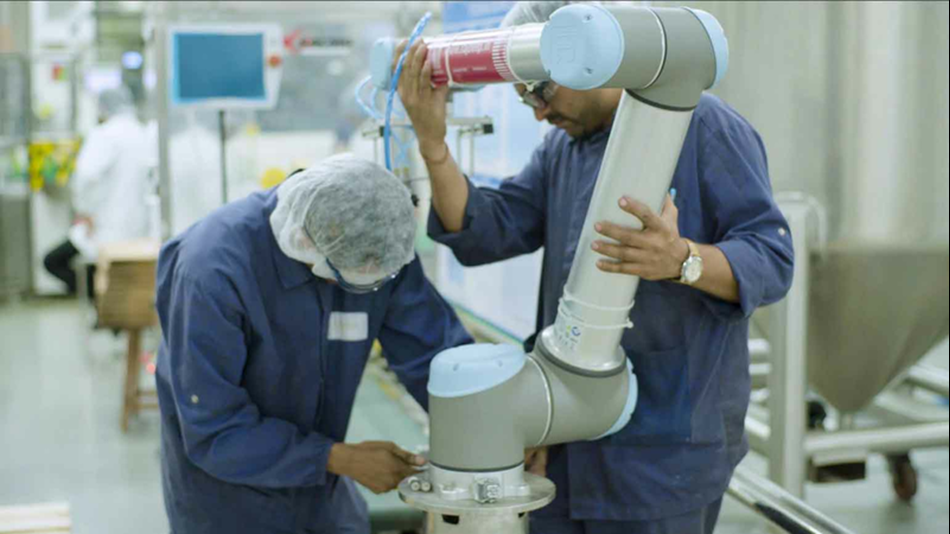
Collaborative robot arm installation is extremely simple
Collaborative robot arm installation also does not require any power source or complex electrical equipment. You just need to plug it into the existing power source at your production facility. In addition, collaborative robots can also be installed on many different surfaces such as: tables, carts, ceilings, walls or linear axes depending on the requirements of each application, making automation more flexible. When it comes to integrating terminals into the robot arm, you can also do this extremely quickly and simply with the plug and play mechanism.
It should be mentioned once again that all robot installation work can be undertaken by the personnel at your production facility, without the need for experienced professionals. The time from installing the collaborative robot to performing the first task is only about 1 hour.
IS PROGRAMMING A COLLABORATIVE ROBOT ARM A LOT OF EFFORT?
Programming a collaborative robot arm compared to a traditional industrial robot
When it comes to programming, you may think of extremely complex, time-consuming tasks or dry lines of code on the computer that require experts with programming knowledge to be able to handle. However, with collaborative robots, programming is simpler than you think.
You do not need to write code but can use the extremely intuitive and easy-to-use software that comes with the robot to teach. Even inexperienced employees can quickly get acquainted and proficient in a short period of time, helping to reduce training costs.
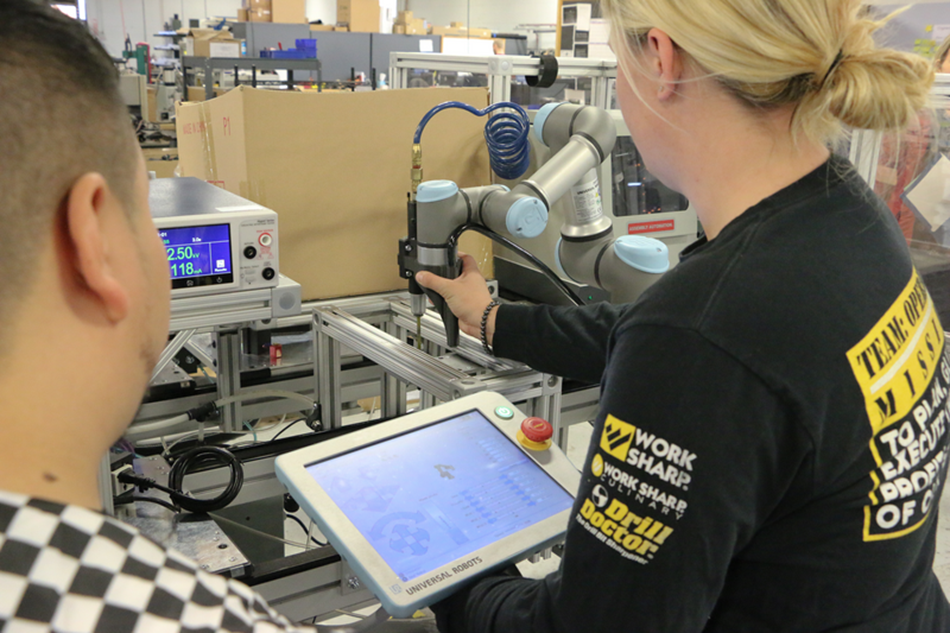
Simple Collaborative Robot Arm Automation Programming with Touch-Sensing Teaching Hand
On average, it takes only about 1.5 days to learn and master programming a UR collaborative robot. Operators can access UR’s extensive learning resources on operating and programming collaborative robots for beginners and experts for free and easily online through the UR academy or learn directly with experts from over 60 teaching centers worldwide.
Ways to program collaborative robot arms
There are many ways to program collaborative robots, such as: Hand-based operations teach touch with 3D visualization software, using programming software to simulate the operation of the robot arm or directly moving the robot arm to the desired positions - this is one of the strengths of collaborative robots compared to traditional industrial robots. Programming by directly moving the robot arm is often widely applied because it is quick, easy and does not require the operator to have any programming knowledge.
IS REDEPLOYING COLLABORATIVE ROBOT ARMS IN AUTOMATED PRODUCTION LINES POSSIBLE?
The Role of Redeployment in Automated Manufacturing
Using a work robot that can be flexibly redeployed can help manufacturing businesses cope with business challenges like the recent Covid-19 pandemic or respond promptlyto changes in the market while still saving costs. In addition, redeployment also helps free workers from boring tasks to take on other more valuable tasks.
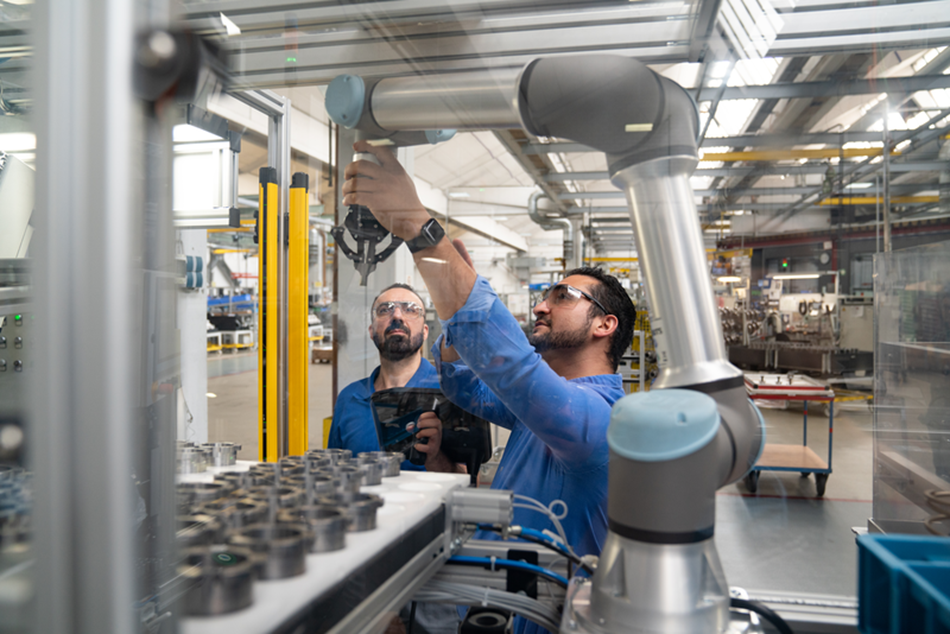
Collaborative robot arms are easily redeployed
Disadvantages of traditional industrial robots
Traditional industrial robots often undertake heavy tasks, so they are often large and bulky, making it difficult or even impossible to move to other locations to perform new tasks. This causes idle waste when there is no production demand. Some industrial robots that can be redeployed sometimes have difficulty programming new tasks, requiring a lot of time and money to retrain operators.
UR cobots make redeployment easy
UR collaborative robots, on the other hand, are compact, easy to move, and can be quickly installed and redeployed. Collaborative robot arms can be redeployed for a variety of automation applications from assembly, welding to packaging. Programming for these new applications is also easy and fast. What's special is that collaborative robots can work safely alongside humans without any protective barriers (after risk assessment), so they can be flexibly deployed in many locations without taking up too much space or having to spend effort setting up new protective barriers.
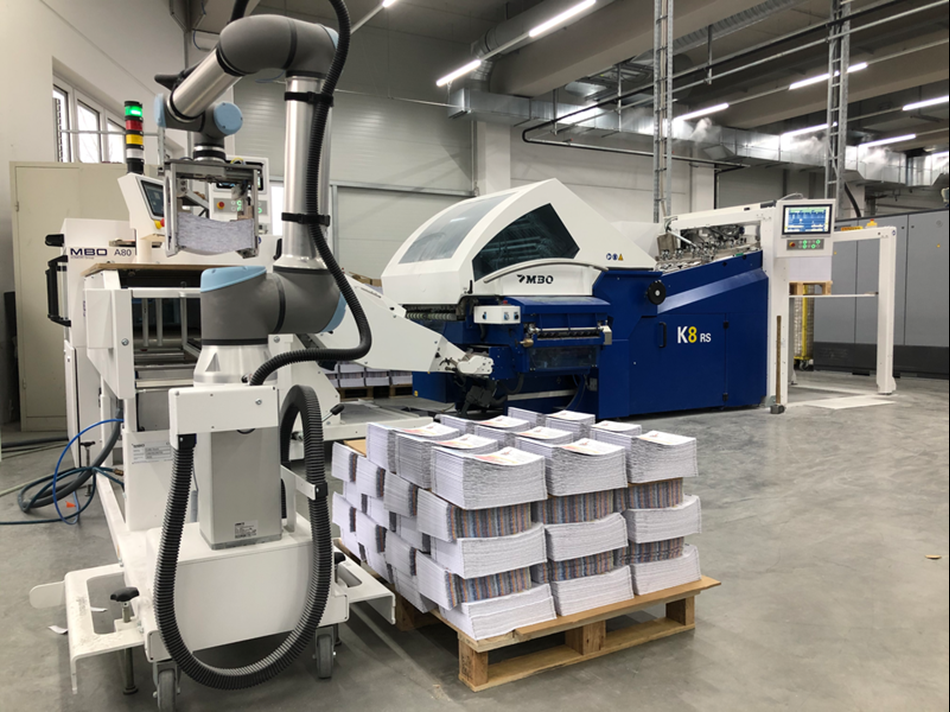
Collaborative robot arms can easily move on carts
Dynamic Group is an example, using collaborative robots in the company's production not only ensures that jobs are done more accurately and faster than manual labor, but also can flexibly move to other positions on carts and take on new tasks quickly, programming is also extremely simple when the operator only needs to move the robot arm directly to guide the robot to perform new tasks.
HOW LONG IS THE LIFE OF A COLLABORATIVE ROBOT ARM?
Collaborative robot arm has impressive durability
Collaborative robots guarantee a minimum lifespan of about 35,000 hours when tested at full capacity with the highest load and fastest speed. However, with normal production conditions and regular maintenance and inspection, the lifespan of collaborative robots will of course be longer. In fact, collaborative robots have been proven to require almost no maintenance and have not had any problems for many years, such as at BJ Gear or L'Oreal.
Collaborative robots are manufactured to meet high quality standards, such as the IP54 standard, which helps the robot operate well in harsh environments, exposed to water and dirt while still ensuring normal operation.
Collaborative robot arm maintenance is extremely easy
In case of needing to maintain or replace parts of the collaborative robot, this job is also completely simple and does not take too much effort.
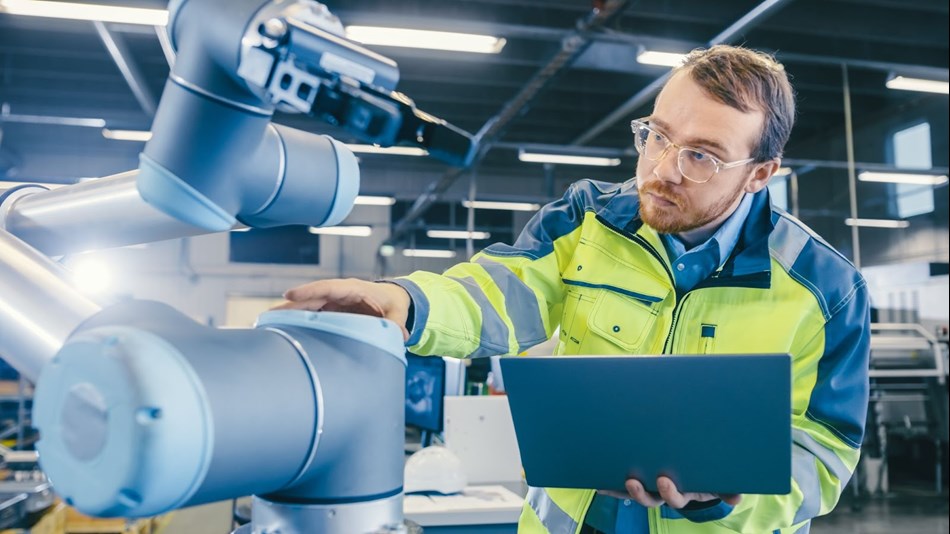
Robotic arms do not require protective fencing (after risk assessment) allowing easy access
Unlike traditional industrial robots, collaborative robots do not require protective fences, so operators can easily access and inspect them. Collaborative robot components can also be easily disassembled and replaced without affecting other components thanks to their modular design. Collaborative robot joints can be easily replaced in just 30 minutes and replacement parts are readily available at UR distributors worldwide.
COLLABORATIVE ROBOT ARM - AUTOMATION HAS NEVER BEEN EASIER
Automation deployment has never been easier with collaborative robot arms. All the difficulties of installation, programming or redeployment that are often encountered with traditional industrial robots seem to have been resolved. UR is always looking for new solutions and technologies to make collaborative robots more accessible to all types of businesses and reduce deployment concerns for administrators.
Article source: universal-robots.com
